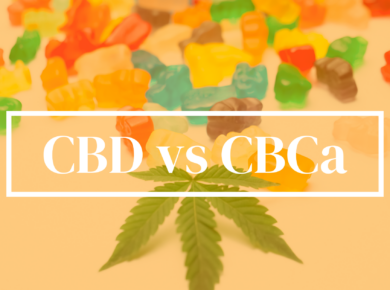Both CBG and CBDa play pivotal roles in the cannabinoid world, hailing from the extensive family of compounds nestled within hemp and cannabis plants. Despite their shared origins, these cannabinoids engage uniquely with our body’s endocannabinoid system, providing a myriad of potential effects and benefits.
A Glimpse into CBG
CBG, often heralded as the “mother” or “stem cell” of cannabinoids, functions as the precursor from which a spectrum of other cannabinoids, including CBDa, are synthesized. During the plant’s maturation, CBG undergoes chemical transformations, morphing into various cannabinoids.
The Essence of CBDa
Conversely, CBDa, the acidic predecessor to CBD, is intrinsic to raw and unheated cannabis or hemp plants. When basked in heat or sunlight, CBDa transitions into CBD through decarboxylation.
Despite their non-psychoactive nature, meaning they don’t invoke the classic cannabis “high,” CBG and CBDa interact distinctively with the endocannabinoid system, potentially offering varied effects and benefits.
Note: The exploration into these cannabinoids is ongoing, and thus, consulting a healthcare professional before introducing any new supplement into your regimen is imperative.
Frequently Asked Questions (FAQs)
- What Are CBG and CBDa?
- CBG, or Cannabigerol, predominantly resides in low-THC and high-CBD cannabis strains, including hemp, and is non-psychoactive. CBDa, or Cannabidiolic Acid, is the acidic form of CBD, abundant in raw and unheated cannabis, and is under research for various properties.
- How Are CBG and CBDa Produced?
- CBG originates from cannabigerolic acid (CBGA), spawning other cannabinoids. CBDa is directly produced in the hemp plant and converts to CBD when exposed to heat, via decarboxylation.
- Main Difference Between CBG and CBDa?
- CBG, as a precursor, synthesizes other cannabinoids, while CBDa, as raw CBD, transforms into CBD upon heating.
- Are CBG and CBDa Present in Hemp?
- Yes, both CBG and CBDa are found in hemp, with concentrations varying based on the strain and plant maturity.
- Utilization in Hemp Products?
- CBG and CBDa infuse a variety of products, with CBG featured in oils and edibles, while CBDa is often found in raw hemp juice and topicals. Their potential properties are under research, and comprehensive understanding of their effects requires further study.




